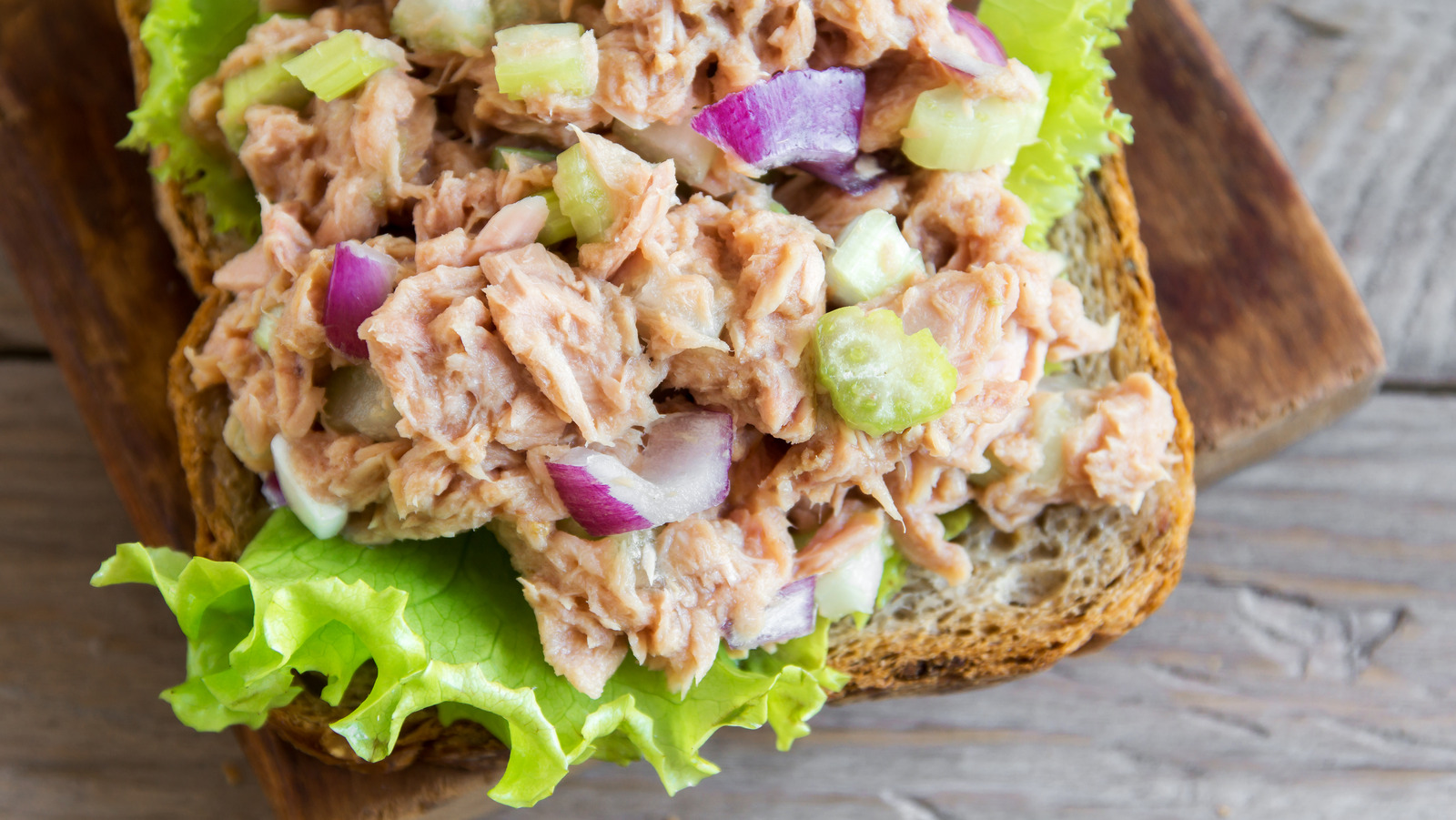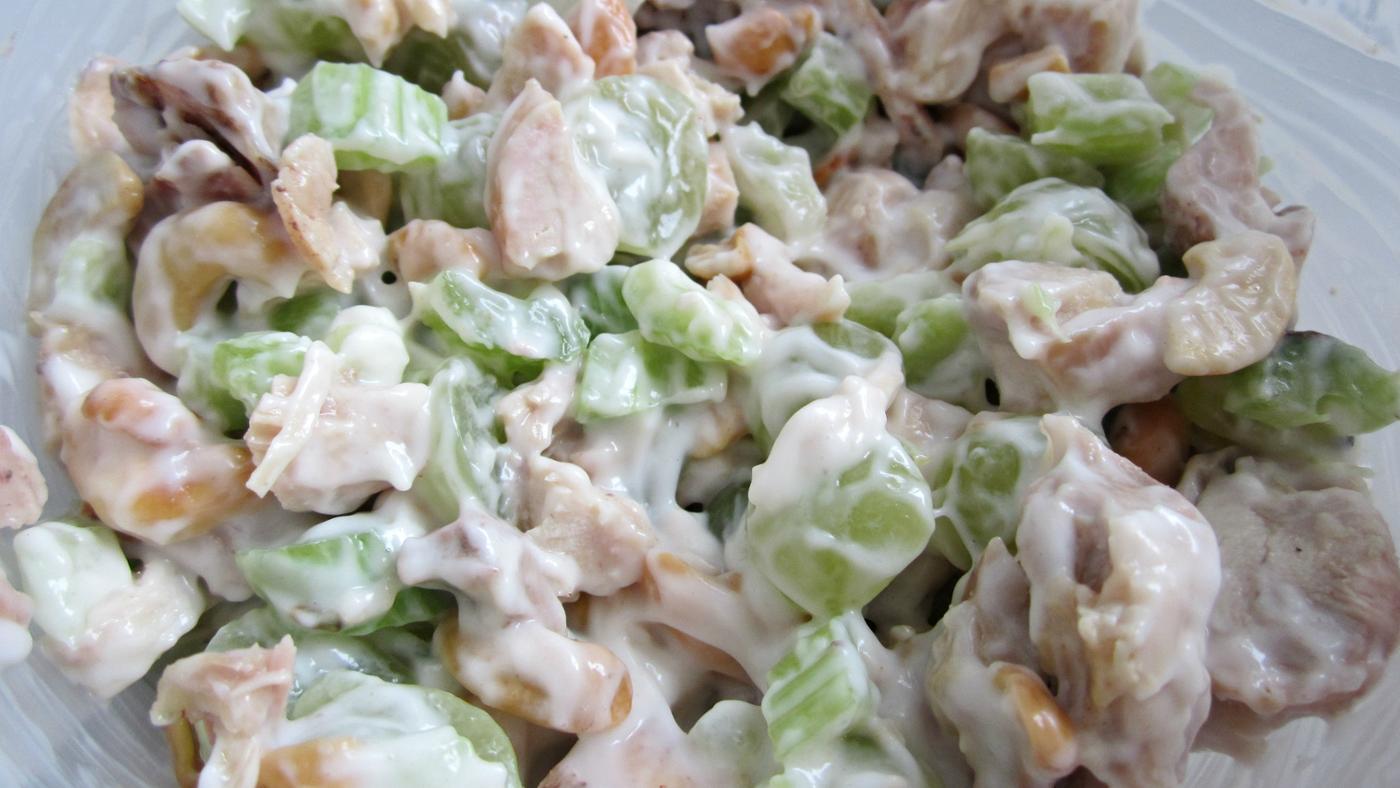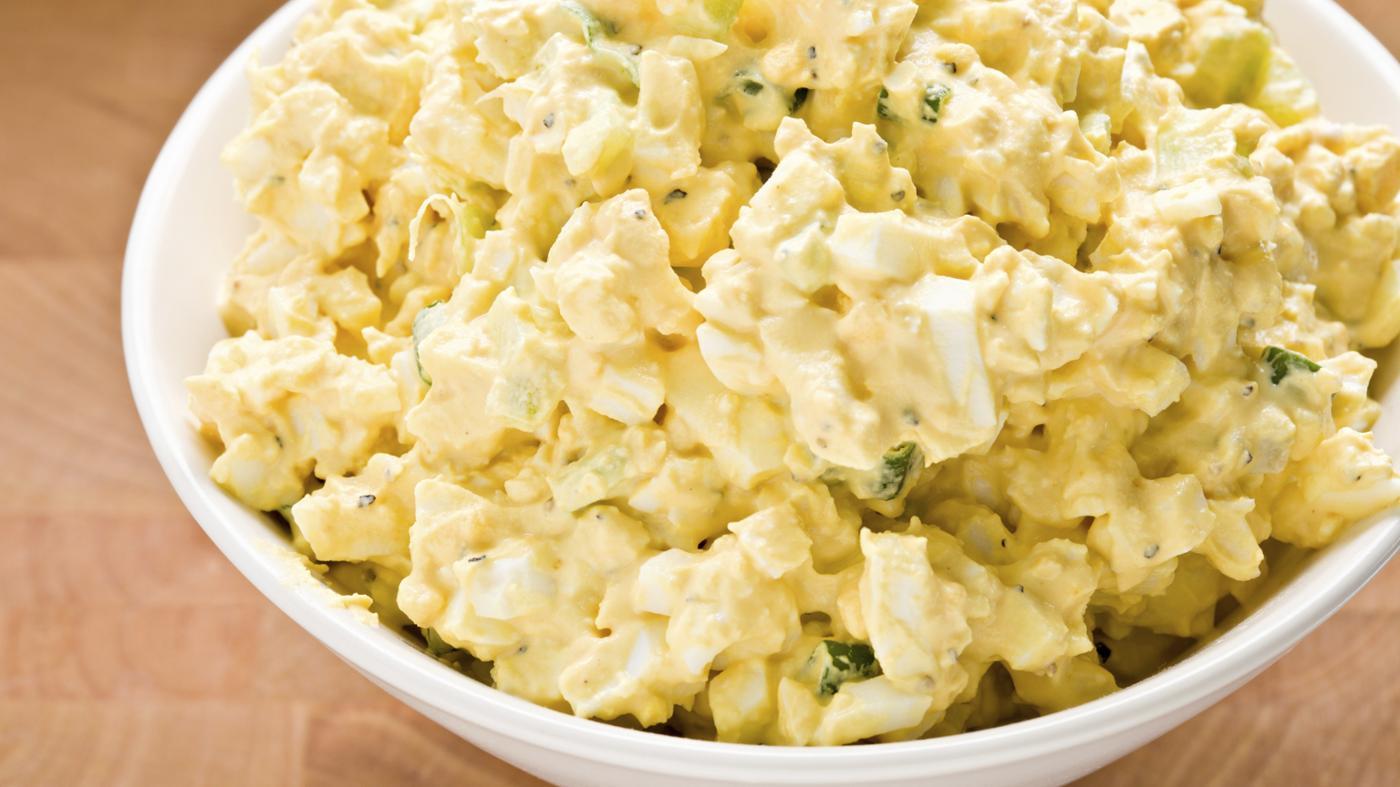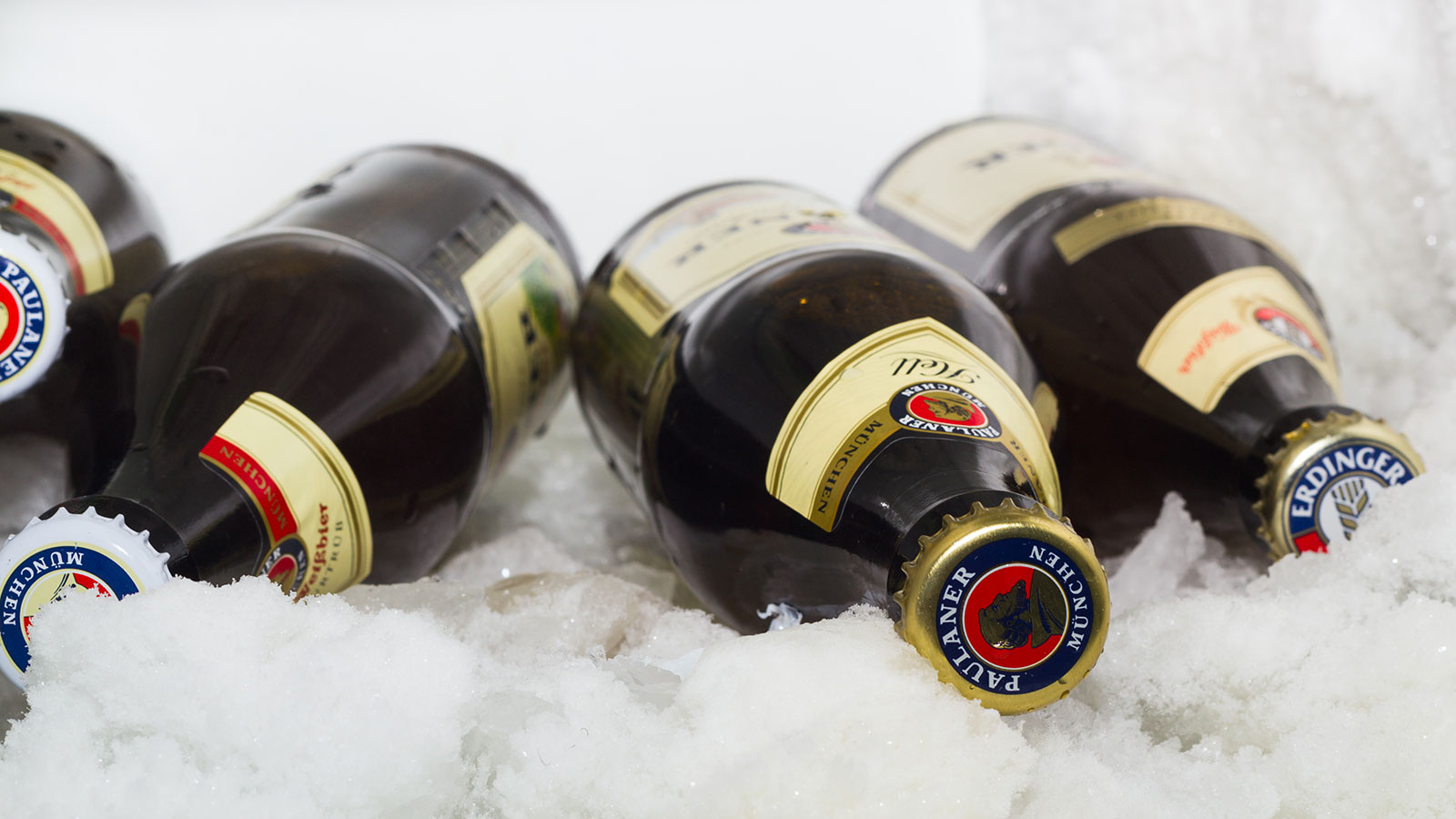Home>Articles>How Long Can You Keep Tuna Salad In The Refrigerator


Articles
How Long Can You Keep Tuna Salad In The Refrigerator
Modified: May 6, 2024
Discover how long you can safely keep tuna salad in the refrigerator. Read our informative articles for expert advice and storage tips.
(Many of the links in this article redirect to a specific reviewed product. Your purchase of these products through affiliate links helps to generate commission for Storables.com, at no extra cost. Learn more)
Introduction
When it comes to quick and convenient meals, tuna salad is a popular choice for many people. Whether you enjoy it on a sandwich, in a wrap, or on a bed of greens, tuna salad provides a satisfying and protein-packed option. However, if you’ve ever made a big batch of tuna salad or bought it from a store, you might wonder how long it can be safely stored in the refrigerator.
In this article, we will explore the shelf life of tuna salad, factors that can affect its freshness, proper storage techniques, and signs of spoilage. Additionally, we will address the common question of whether tuna salad can be frozen for long-term storage. By understanding these important aspects, you can ensure that your tuna salad remains safe to consume and delicious for as long as possible.
Key Takeaways:
- Don’t let your tuna salad go to waste! Store it in the refrigerator for 3-5 days, and follow proper storage and hygiene practices to keep it fresh and safe to eat.
- While freezing tuna salad is an option, it may compromise the texture and taste. Prioritize enjoying it fresh or within the recommended storage time for the best flavor and quality.
Read more: How To Store Tuna Salad
Shelf Life of Tuna Salad
The shelf life of tuna salad can vary depending on several factors, including the ingredients used and the storage conditions. On average, homemade tuna salad can be safely stored in the refrigerator for 3 to 5 days. Store-bought tuna salad typically has a shorter shelf life and should be consumed within 2 to 3 days of purchase.
It is important to note that these are general guidelines and the freshness of tuna salad can also be influenced by factors such as the quality of ingredients, proper preparation techniques, and the cleanliness of utensils and containers used.
Additionally, if you add perishable ingredients to your tuna salad, such as diced celery, onions, or hard-boiled eggs, the shelf life might be reduced. These ingredients can introduce bacteria into the salad, causing it to spoil more quickly.
To ensure the longest possible shelf life for your tuna salad, it is crucial to handle and store it properly. This includes refrigerating the salad promptly after preparation or purchase and keeping it at a consistently cold temperature.
Now that we know the general shelf life of tuna salad, let’s dive into the factors that can affect its freshness.
Factors Affecting Tuna Salad Shelf Life
Several factors can influence the freshness and shelf life of tuna salad. Understanding these factors can help you determine how long your tuna salad will remain safe to consume.
1. Ingredients: The freshness and quality of the ingredients used in the tuna salad can impact its shelf life. If you use fresh, high-quality tuna and other ingredients, the salad is likely to stay fresh for a longer period. However, if any of the ingredients were close to their expiration date or were not stored properly before being used, it can accelerate the spoilage of the tuna salad.
2. Temperature: The temperature at which the tuna salad is stored plays a crucial role in its shelf life. Tuna salad should always be kept in a refrigerator at or below 40°F (4°C) to prevent the growth of harmful bacteria. If the salad is left out at room temperature for an extended period, it can quickly become a breeding ground for bacteria, leading to spoilage.
3. Storage Container: The type of container used to store the tuna salad can affect its freshness as well. It is recommended to use airtight containers made of glass or plastic that are specifically designed for food storage. These containers help to maintain the freshness of the salad and prevent any odors from seeping in or out, prolonging its shelf life.
4. Cross-Contamination: Proper food handling practices are essential in preventing cross-contamination. When preparing or storing tuna salad, make sure to use separate utensils and cutting boards for raw ingredients and ready-to-eat foods. Cross-contamination can introduce harmful bacteria into the salad and result in foodborne illnesses.
5. Hygiene: Practicing good hygiene is crucial when handling food, including tuna salad. Always wash your hands thoroughly before preparing or serving the salad. Additionally, make sure the utensils and surfaces used for food preparation are clean and sanitized to prevent potential contamination.
By taking these factors into consideration and implementing proper food safety practices, you can maximize the shelf life of your tuna salad and minimize the risk of foodborne illnesses.
Proper Storage of Tuna Salad
Proper storage of tuna salad is crucial to maintain its freshness and ensure its safety for consumption. By following these guidelines, you can extend the shelf life of your tuna salad:
1. Refrigeration: Always refrigerate tuna salad promptly after preparation or purchase. Place it in an airtight container and store it in the refrigerator at or below 40°F (4°C). This will help to slow down bacterial growth and keep the salad fresh.
2. Separate Storage: It’s important to store tuna salad separately from other food items in the refrigerator. This will prevent any potential cross-contamination and maintain the quality of the salad. Place it on a shelf away from raw meats, seafood, or strong-smelling ingredients to avoid flavor transfer.
3. Airtight Container: Choose a container that is specifically designed for food storage and has an airtight seal. This will help to prevent moisture and odors from entering or escaping the container, preserving the freshness of the tuna salad.
4. Labeling: Properly label the container with the date of preparation or purchase. This will help you keep track of the salad’s shelf life and ensure that you use it within the recommended time frame.
5. Avoid Temperature Fluctuations: Try to minimize temperature fluctuations as much as possible. Opening the refrigerator frequently or leaving it open for extended periods can cause temperature variations, which can affect the freshness of the tuna salad. Be mindful and keep the refrigerator door closed when not in use.
6. Portion Control: If you have a large batch of tuna salad, consider dividing it into smaller portions before refrigerating. This will allow you to take out only the amount you need at a time, reducing the risk of contamination and avoiding unnecessary exposure to air.
Following these storage guidelines will help maintain the quality and safety of your tuna salad, ensuring that it remains fresh and delicious for the maximum recommended shelf life.
Tuna salad can be kept in the refrigerator for 3-5 days. Make sure it is stored in an airtight container to maintain freshness.
Signs of Spoilage
It is important to be able to identify the signs of spoilage in tuna salad to ensure your safety and prevent any unpleasant experiences. Here are some common indicators that your tuna salad has spoiled:
1. Foul Odor: If your tuna salad develops a strong, unpleasant odor, it is a clear indication that it has gone bad. Trust your sense of smell and if it smells off or rancid, it’s best to discard the salad.
2. Change in Appearance: Visually inspect the tuna salad for any changes in color or texture. If you notice any significant discoloration, such as a grayish or yellowish tint, or if the texture becomes overly slimy or mushy, it is a sign of spoilage and the salad should not be consumed.
3. Mold Growth: If you spot any mold growth on the surface of the tuna salad, it is a definite sign that it has spoiled. Mold can be green, blue, white, or black in color and should never be consumed. Discard the salad immediately.
4. Sour or Off Taste: Taste a small portion of the tuna salad. If it has a sour or off flavor different from its usual taste, it indicates that harmful bacteria have multiplied, causing spoilage. Avoid consuming it.
It is important to note that consuming spoiled tuna salad can lead to foodborne illnesses, such as salmonella or listeria infections. These can cause symptoms like nausea, vomiting, diarrhea, abdominal pain, and fever. If you suspect that you have consumed spoiled tuna salad and experience any of these symptoms, seek medical attention.
Always prioritize your health and safety when it comes to consuming food. When in doubt, it is better to err on the side of caution and discard the tuna salad if you suspect it has spoiled.
Can Tuna Salad Be Frozen?
Tuna salad can be frozen, but it is not recommended to do so. The texture and quality of the salad may significantly change once it is thawed, resulting in a less appealing taste and texture.
Freezing can cause the mayonnaise-based dressing in tuna salad to separate and become watery upon thawing. This can lead to a loss of flavor and a mushy consistency. Additionally, ingredients like vegetables and herbs may become limp and lose their crunch when frozen and thawed.
If you find yourself with leftover tuna salad that you are unable to consume within the recommended storage time, freezing it can be an option to extend its shelf life. However, it is crucial to follow these guidelines:
1. Use Proper Containers: Transfer the tuna salad into a freezer-safe, airtight container. Make sure to leave some space at the top to allow for expansion during freezing.
2. Label and Date: Label the container with the date of freezing so that you can keep track of how long it has been frozen. This will help you ensure that you use it within a reasonable time frame.
3. Thawing and Consumption: When you are ready to use the frozen tuna salad, thaw it in the refrigerator overnight. Avoid thawing at room temperature, as it can lead to bacterial growth. Once thawed, consume the salad as soon as possible to maintain its quality.
While freezing can help extend the shelf life of tuna salad, it is important to note that the texture and taste may be compromised. It is always best to consume tuna salad when it is freshly made or within the recommended storage time frame to enjoy its full flavor and quality.
If you frequently find yourself with leftover tuna salad, you may consider adjusting your portion sizes or recipe quantities to minimize waste and ensure that you can consume it within the recommended timeframe.
Conclusion
Tuna salad is a versatile and delicious dish that can be enjoyed in various ways. To ensure that your tuna salad remains safe to consume and maintains its freshness, it is essential to understand its shelf life, proper storage techniques, and signs of spoilage.
Homemade tuna salad can generally be safely stored in the refrigerator for 3 to 5 days, while store-bought tuna salad should be consumed within 2 to 3 days. However, the shelf life can vary depending on the ingredients used and proper handling practices.
Factors such as the quality of ingredients, temperature, storage containers, cross-contamination, and hygiene all play a role in the freshness and shelf life of tuna salad. By following guidelines such as refrigeration, using airtight containers, and practicing proper food handling and hygiene, you can extend the shelf life of your tuna salad.
It is important to be able to recognize signs of spoilage, including foul odor, changes in appearance, mold growth, and off taste. If you notice any of these signs, it is best to discard the tuna salad to avoid the risk of consuming spoiled food.
While it is possible to freeze tuna salad, it is not recommended due to the potential changes in texture and taste upon thawing. Freezing can cause the mayonnaise-based dressing to separate and vegetables to lose their crunch. It is advisable to consume tuna salad when it is freshly made or within the recommended storage time frame.
In conclusion, by understanding the shelf life of tuna salad, proper storage techniques, signs of spoilage, and the limitations of freezing, you can enjoy safe and delicious tuna salad for as long as possible. Prioritize food safety and maintain good storage practices to maximize the freshness and quality of your tuna salad.
Curious about more than just tuna salad storage? If you're gearing up to optimize your food preservation methods, you won't want to miss our upcoming guide on "12 Best Cold Storage" for 2024. This guide is packed with fresh advice on the latest technologies and strategies to keep your groceries fresh longer.
Frequently Asked Questions about How Long Can You Keep Tuna Salad In The Refrigerator
Was this page helpful?
At Storables.com, we guarantee accurate and reliable information. Our content, validated by Expert Board Contributors, is crafted following stringent Editorial Policies. We're committed to providing you with well-researched, expert-backed insights for all your informational needs.















0 thoughts on “How Long Can You Keep Tuna Salad In The Refrigerator”